HOLIDAY CACTUS CARE – TOP 5 TIPS
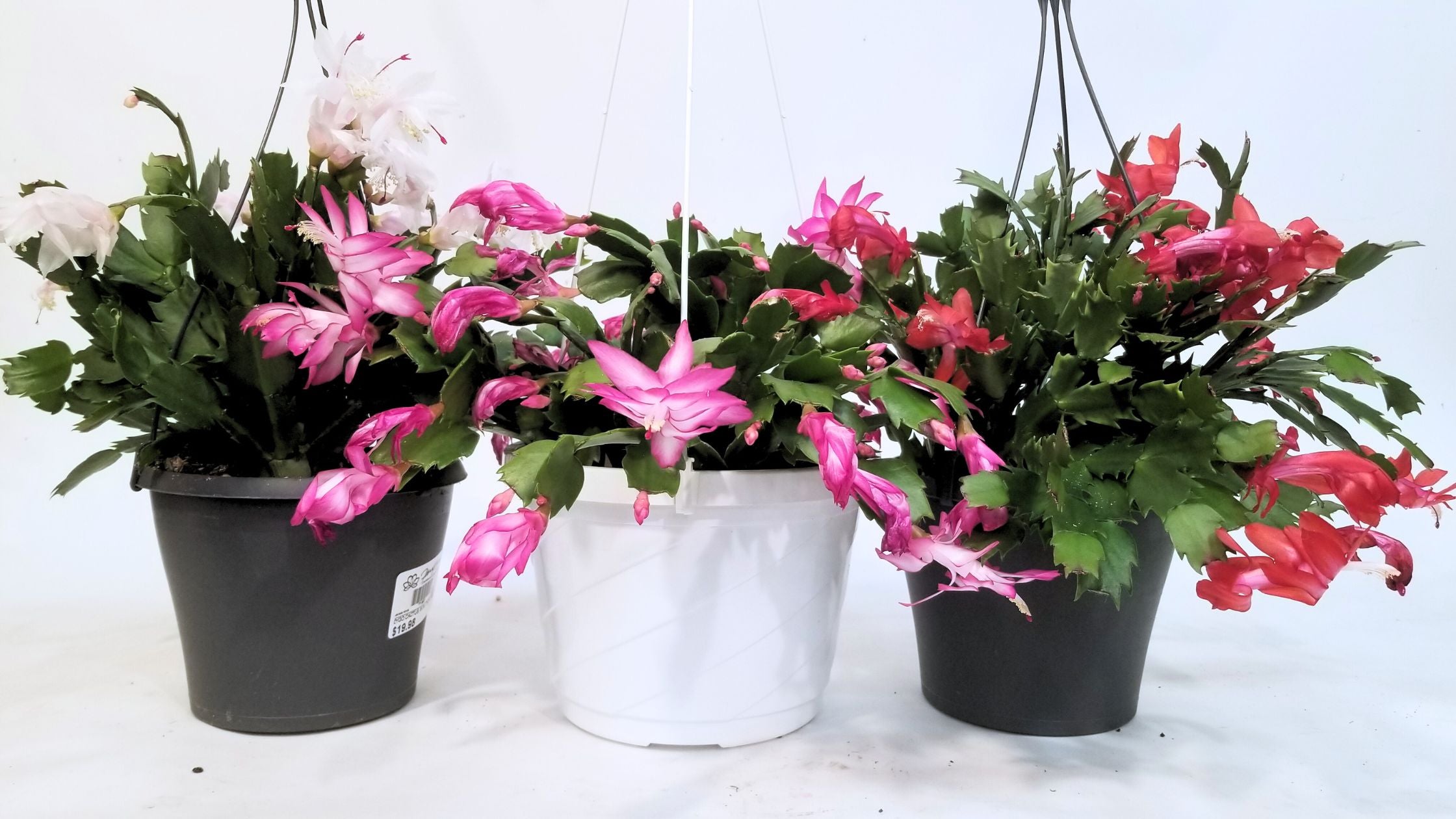
When you think back to Christmas past, no doubt your grandmother and mother had a Christmas Cactus in a place of honor for all the world to see as it bloomed non-stop during the festive season. Most of the time the plant would have been passed down via cuttings for generations. You may be in possession of a Christmas Cactus family heirloom right now!
Tip #1 -Whats in a Name?
There are three species of what is collectively called holiday cactus. Often, there is confusion regarding the differences between the three. To correctly identify each one is to pay attention to the difference in leaf shape, bloom season, flower shape and general overall plant form.
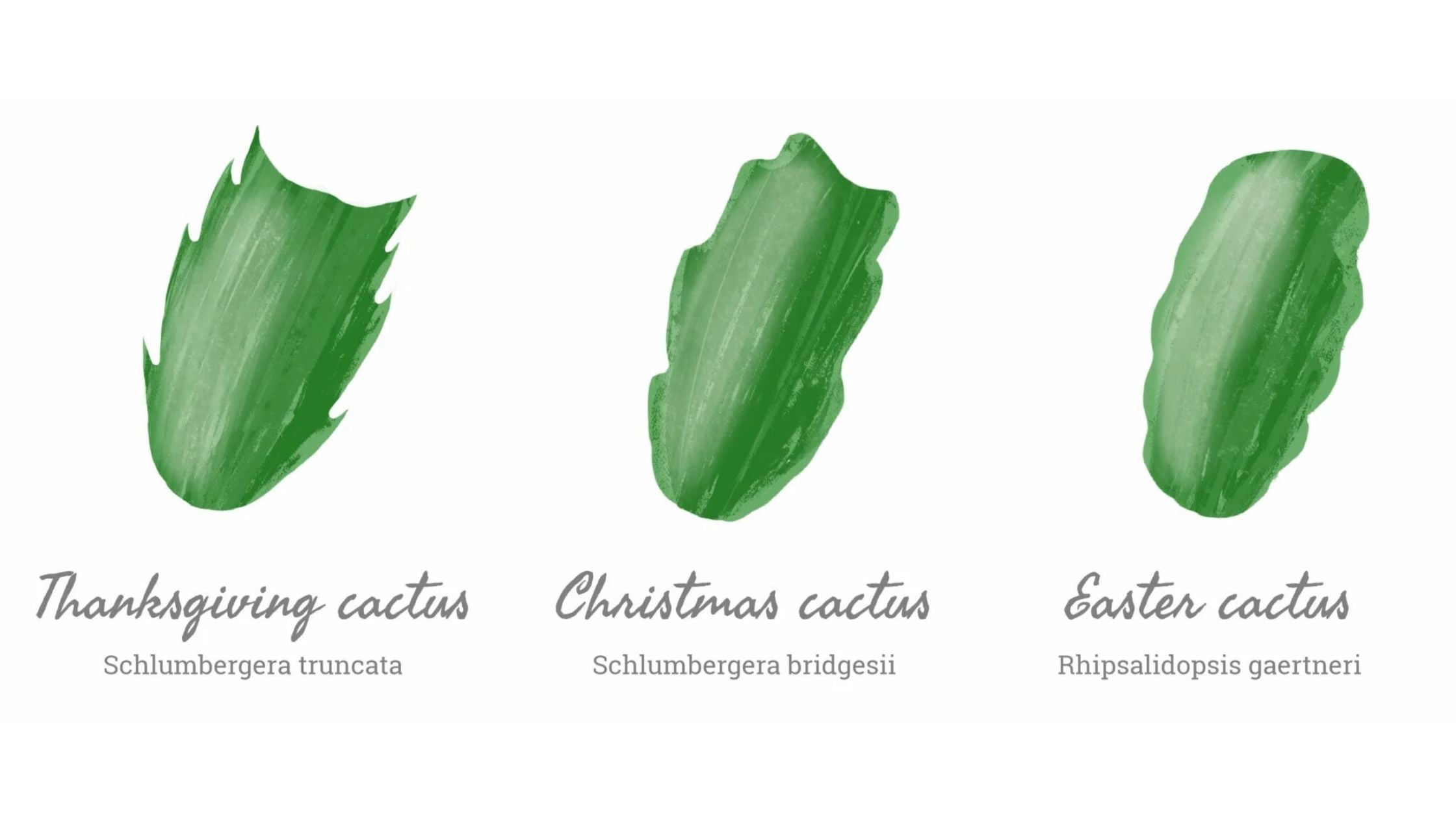
The three are Easter (Rhipsalidopsis gaertneri) – (The genus replacements name took effect in January 2023), Thanksgiving (Schlumbergera truncata) and Christmas (Schlumbergera. x buckleyi). They are not true cacti, but epiphytic succulents that grow in moist decayed matter in trees and on the ground of South American rain forests. The Easter cactus is usually found in somewhat drier forests of South America.
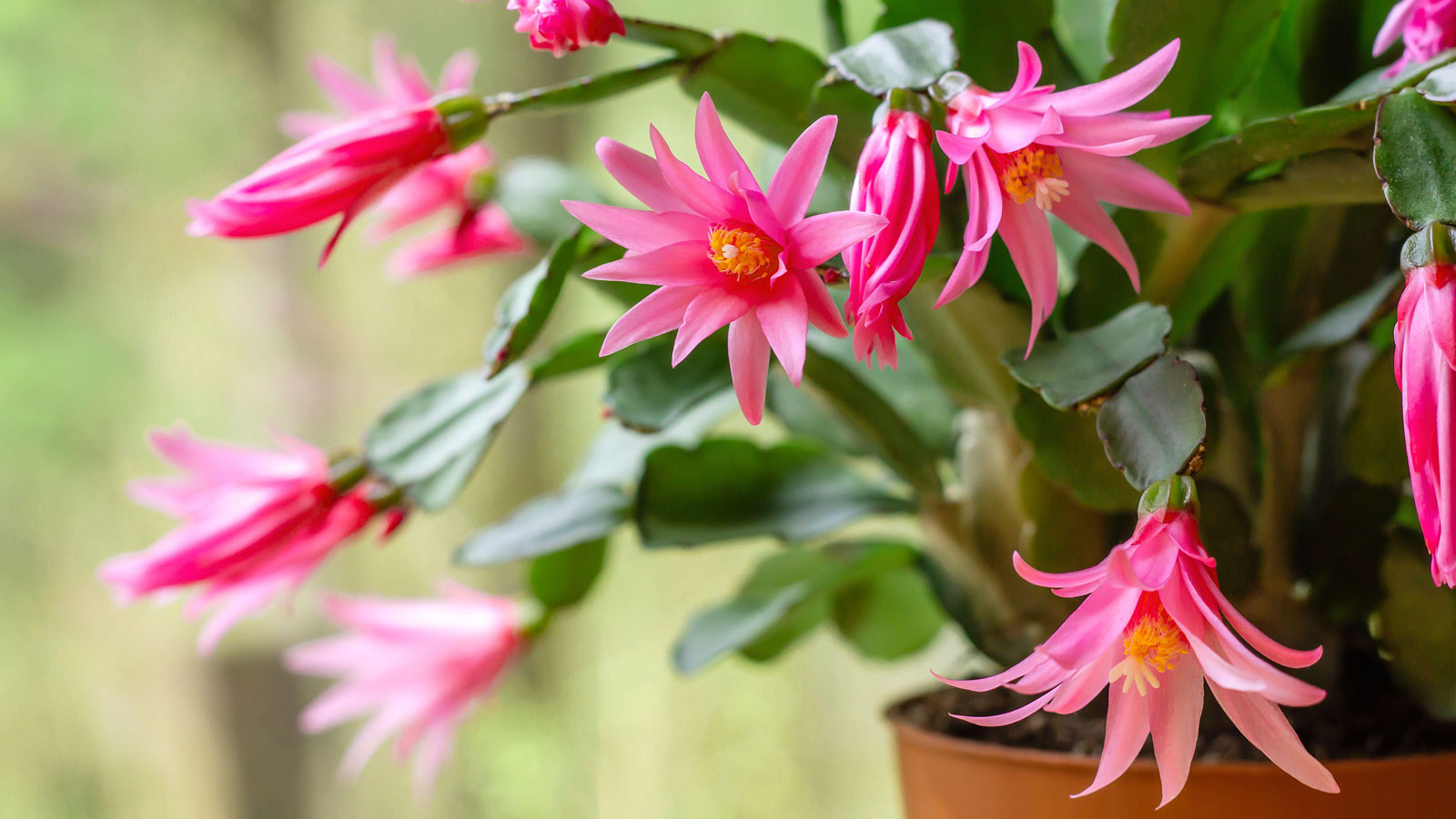
Easter Cacti – Just to add to the latin name confusion; Easter Cactus are also known as Hatiora gaertneri. They usually bloom from March until May. The multi-petalled flowers are found in colors of orange, red, pink and cherry. The blooms face outward like a bursting star; open at sunrise and close at sunset.
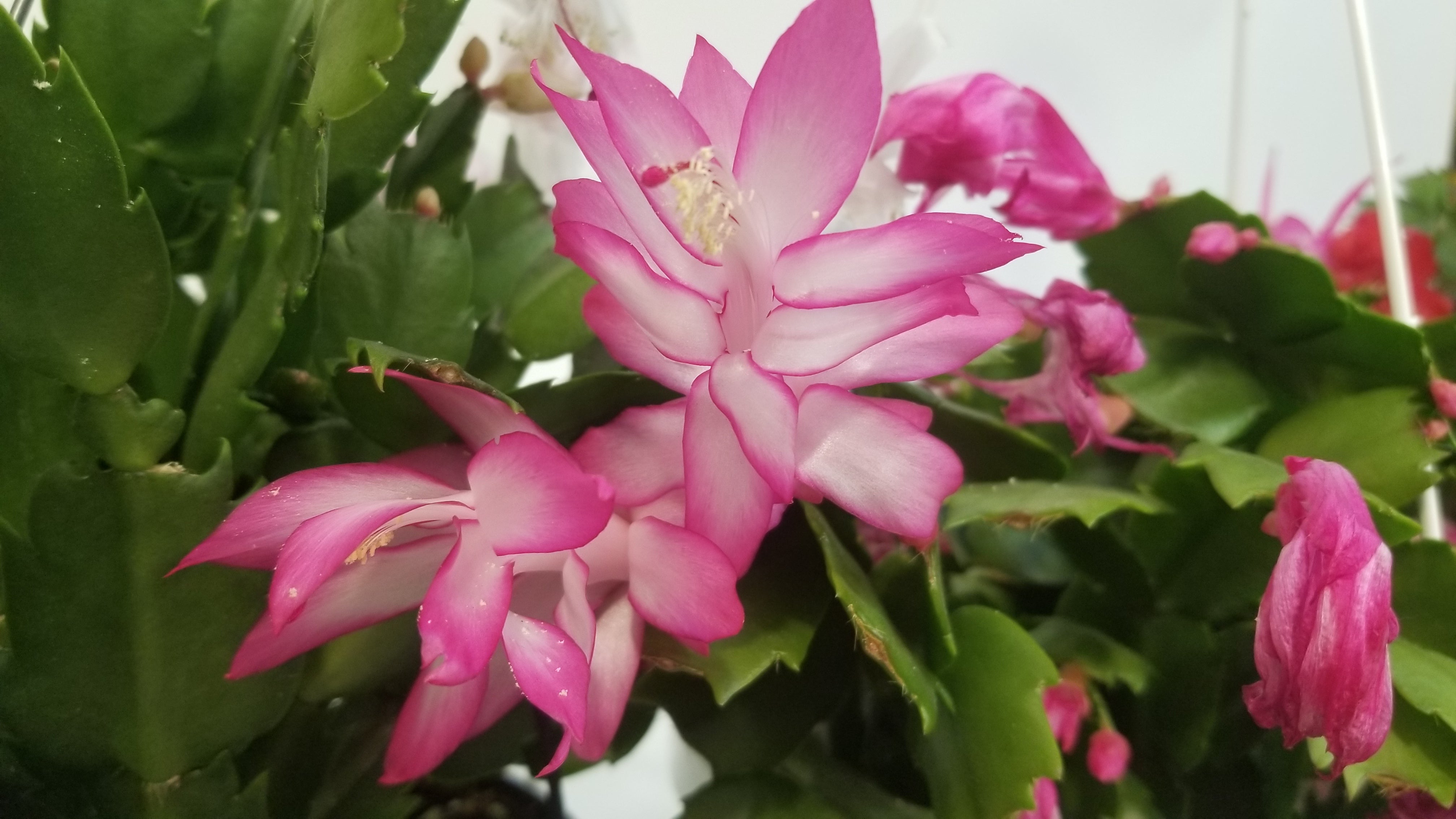
Thanksgiving Cacti – Native to Brazil. The segmented fleshy green stems grow upright at first, then arch over. The long 5 - 7.5 cm. tubular long flowers face somewhat upward and appear from November to early January. The colors vary, from pink, red, white, yellow to orange.
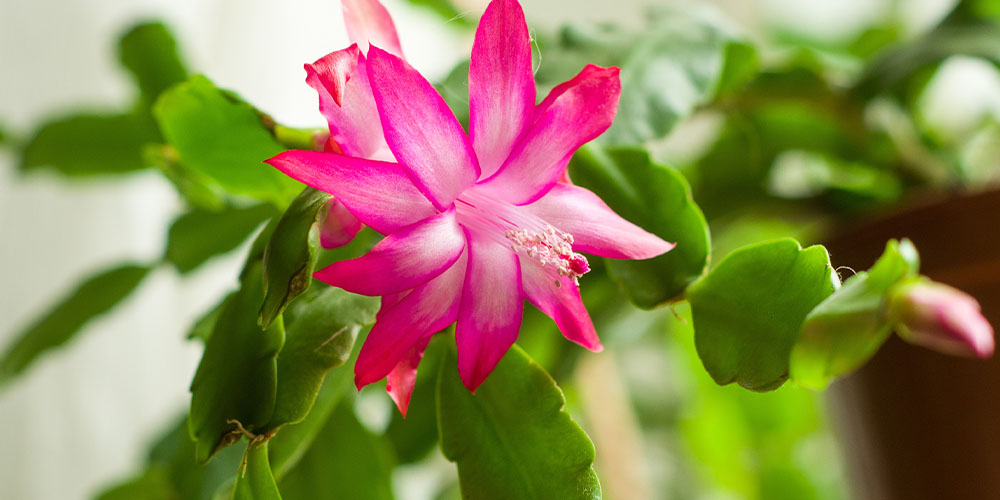
Christmas Cacti – Flower from late November thru to early February. Their flower color varies as well; coming in shades of pink, red, purple, orange and yellow. The flattened stems and flowers hang down.
What is a Zygocactus?
A zygocactus is basically a Thanksgiving Cactus.
One example is the Thor series created by Thor Schlumbergera breeders in Denmark. The Thor series of colors (10) were bred to produce a stronger, bushier plant with smaller leaves and lots of flower power. They bloom from late November to March. They will also tolerate temperatures of 10-25 degrees C.
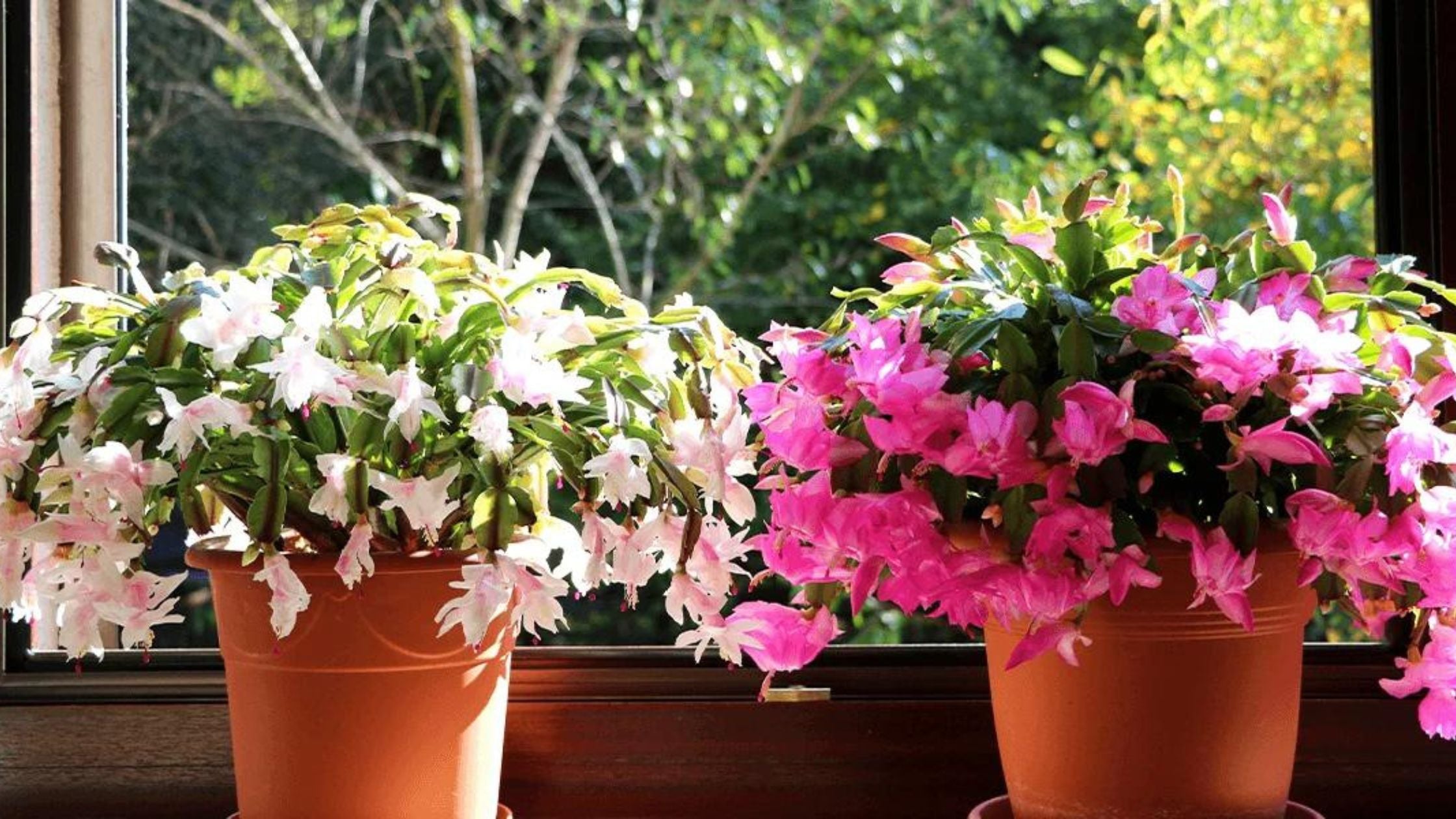
Tip # 2 - Holiday Cactus Care
After purchasing your holiday cactus, make sure the plant is wrapped in paper and please go directly home after purchase! Do not buy plants and leave them in a cold car at the mall for an hour while you shop. The plant(s) will die.
Place in bright, indirect light in your home. They do not like full sun. If the best location is in your kitchen or bathroom all the better, as they provide some humidity. Keep the soil moist throughout the winter; especially when it is blooming. Wait until the soil has dried down 2.5 cm before watering. Over the winter a temperature of 21 degrees C in the day and 15-18 degrees C during the night is just right for your cactus. Drain well. When blooming has finished, let your cacti rest until early spring.
Tip # 3 - Fertilization
Fertilize with a balanced houseplant fertilizer such as a water soluble 20-20-20. Feed at ¼ strength during spring and summer every 10 days and once a month during the fall. Do not fertilize while the cactus is in bloom.
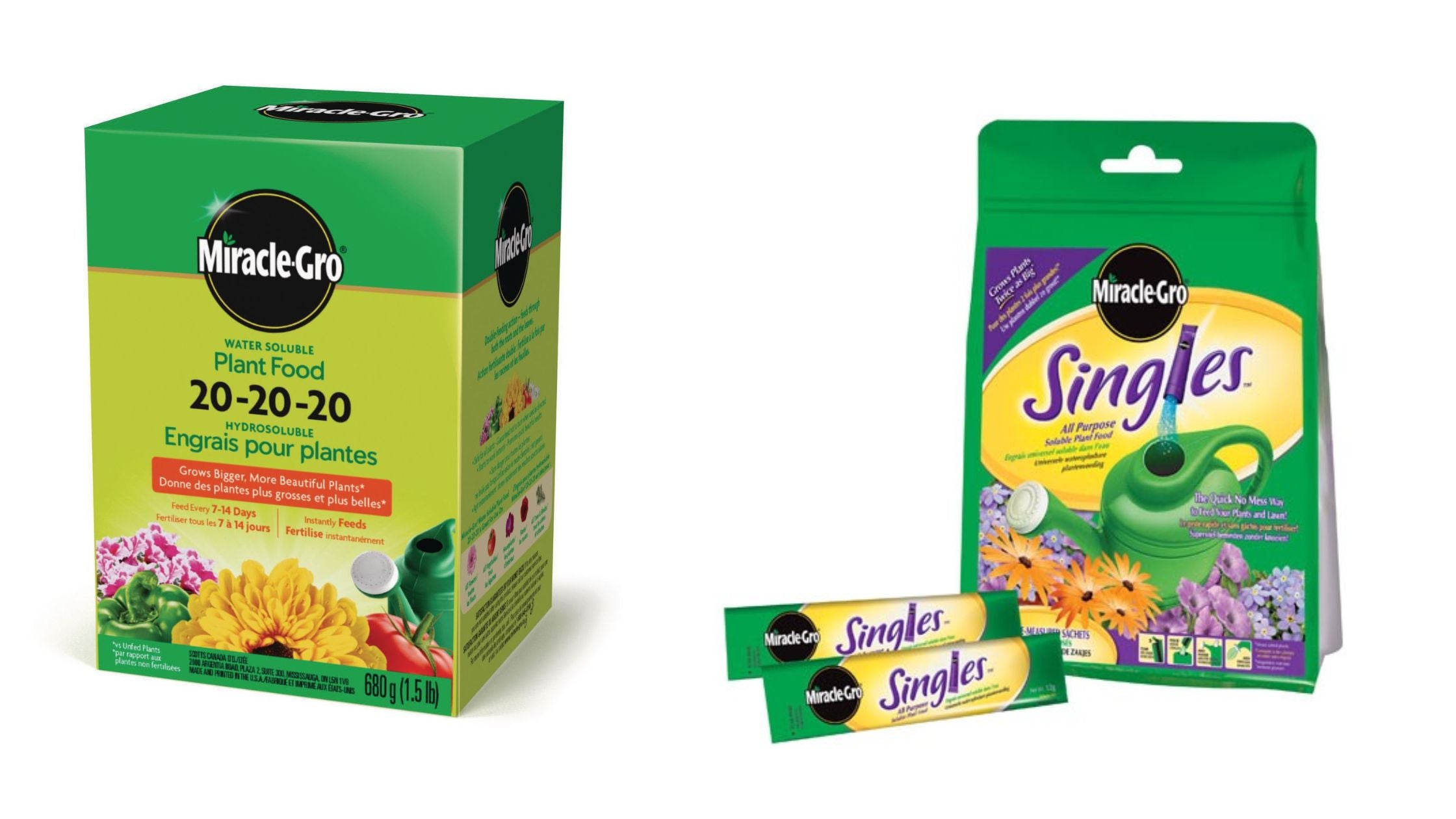
Tip # 3 – Pruning and Propagation
The best time to prune your cactus is in spring. Multiple 3 - leaf sections can be pruned or pinched off the mother plant and used for propagation. Pruning will also help the mother plant to bush out and produce more flowers in the winter.
Your propagation soil should be a mix of 1/3 cacti-succulent soil, 1/3 perlite and 1/3 peat moss to increase the drainage and aeration in the pots. Put aside the 3-leaf sections for one or two days so the wounds can callous over. Dampen the soil mix. Fill the pots. Dip the calloused ends in powdered rooting hormone #1, shake the excess powder off and push them down into the damp soil about 1.25 cm. If the stem is not standing upright, you can push it down, but no further than the first leaf joint. Planting too deep will likely lead to root rot. The next step is to water and cover the plants with a clear plastic bag or create a clear tent that will hold in some humidity. Keep the cuttings moist at all times. Place all in a bright room but never in direct sun. Room temperature should be 18-21 degrees C. When new growth begins to form you have successfully rooted your cuttings! The rooting process can take 3-12 weeks.
Tip # 4 - Repotting
Repot in spring or early summer every two to three years. Holiday cacti like to be somewhat root bound. I have spoken to customers that have never repotted their cacti in years and they are doing just fine! Use a cacti-succulent soil mixed with peat moss and extra perlite, and a size larger pot with great drainage. This is very important as lack of drainage leads very quickly to root rot. The day before you repot, thoroughly water your cactus. Gently loosen the roots with your fingers. Prune off any roots that have browned or are too long. Where the roots meet the stem (crown) stays at soil level. Fill with new soil around the pot edges and water again. Place in a bright room but not in direct sun.
Tip #5 - Helping Them to Bloom
Thanksgiving and Christmas Cacti
Flower bud formation is triggered by cool temperatures and shorter days. Well most of the time that is.
In mid- September move your plant to a cool but bright room. Flower buds form best in a cool room temperature of 10-15 degrees C. This is very cool and at these low temps the amount of day length and night length really don’t matter.
If your ‘cool room’ temperature is from 15 degrees C to 21 degrees C your plant will need 13 hours per day of uninterrupted darkness. At any room temperature above 21 degrees C. you will need 15-16 hours of darkness.
A box makes a great black-out cover but do check it for holes as any light at all leaking inside it will set the process back.
When the flower buds start to form, fertilize once with ½ strength 20-20-20 and move the plant to a room with bright, indirect light. Be aware that cold and hot drafts can cause bud drop.
Easter Cacti
Easter Cacti form flower buds with equal amounts of daytime light hours and dark hours in a room that is kept very cool – 10 to 15 degrees C. Allow 8 weeks before the Easter blooming season to begin this process. The room should have bright light but no direct sun. Do not fertilize during the eight week period. Fertilize once with water soluble 20-20-20 at ½ strength when buds are beginning to form and then move the pot into a bright, warm room. If necessary, repot after the blooming season.
Troubleshooting
If your cacti is not blooming it may be due to too much light or too high a room temperature.
Yellow leaves – Too much light. These plants cannot tolerate direct sun.
Red leaves – Too much light or a magnesium deficiency.
Bud drop – Your cacti may be too dry. Water regularly when bud formation begins, and through the flowering season. These plants do not like to completely dry out. Sudden temperature changes and hot or cold drafts will cause bud drop as well.
Overwatered plants will get root rot. If this happens, prune back any brown roots and repot into a clean cact/succulent soil.
Toxicity
Holiday cacti are not toxic to humans, dogs and cats.

Great place. Very helpful and informative staff.Great advice for Christmas cacti
Also appreciate the deals they give us.Thanks.Love shopping at Floral Acres